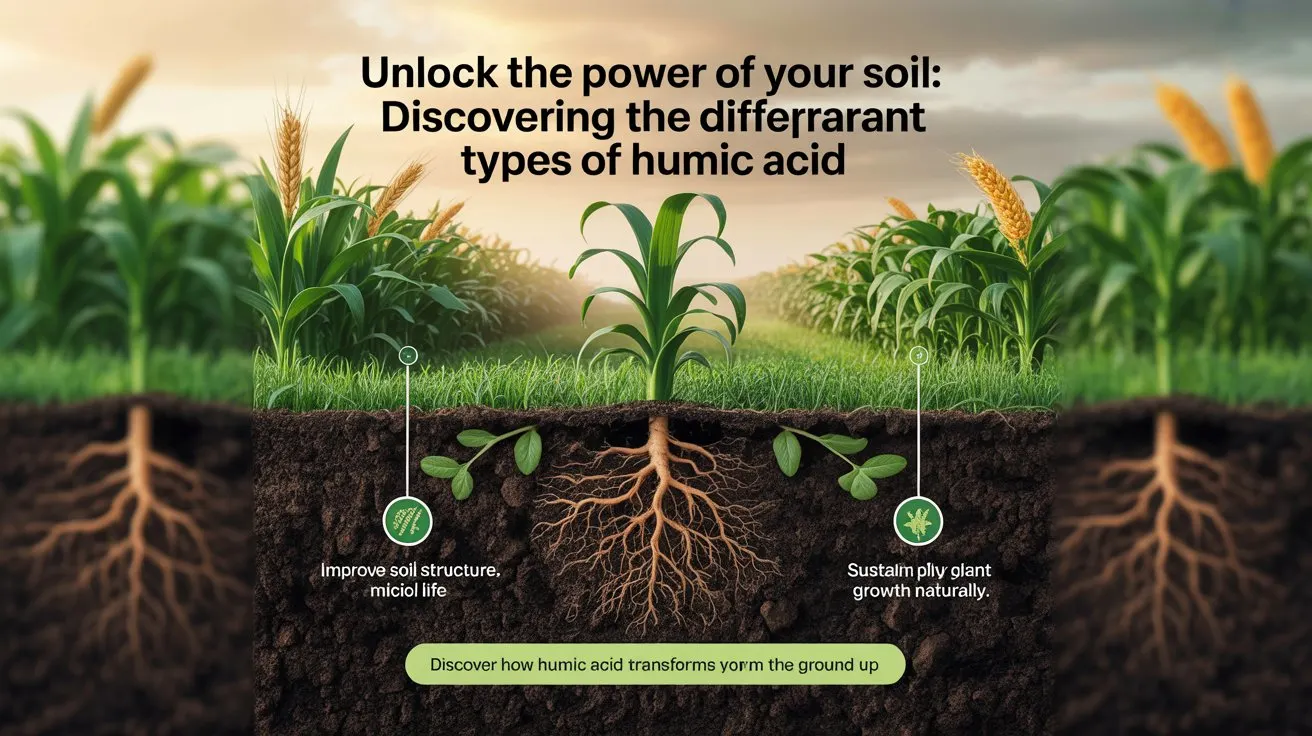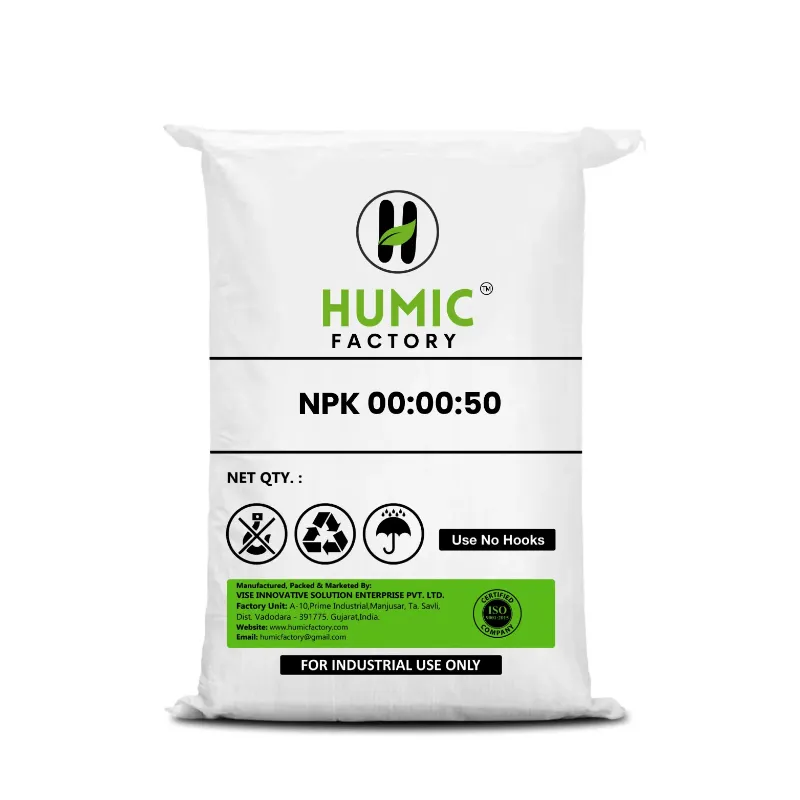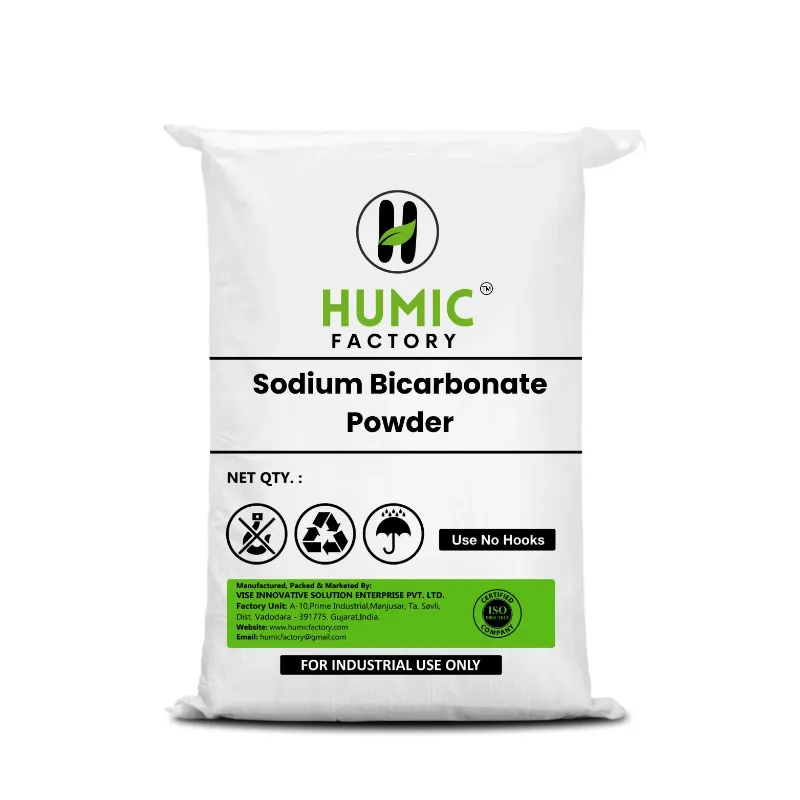Humic acid is an important natural ingredient in improving soil health and plant growth. Recognizing and understanding the various types of humic acid gives growers the relative benefit of selecting the right type each form of humic acid is fit to improve soil performance for their application.
Each type of humic acid has its own method of supporting the soil:
- Humic acid liquid fertilizer provides immediate and fast results, delivering nutrients to the plant root as quickly as possible with sprays or through irrigation.
- Humic granules will slowly release nutrients, improve soil structure, improve water holding capacity, and continually feed soil microbes over time.
- Humic acid shiny balls have a controlled and continual release approach which is ideal for applications with pots (potted plants), greenhouses or other precision applications for crops.
Choosing the correct type of humic acid allows the full utilization of the soil, and producing healthy plants while contributing to better harvesting or higher yields.
Introduction – Why Understanding Types of Humic Acid is Essential for Soil Health
Soil health is the primary driver for successful farming abilities. Humic acid is one of the many natural options we have to improve agriculture, but the different forms of humic acid have an incredible impact on the soil and plant development. Understanding the different forms can make it easier for growers, farmers, and gardeners to pick the product that works best for their land.
Humic acid is available in different forms such as humic acid liquid fertilizer, humic granules, and humic acid shiny balls that create distinct ways to help improve the soil fertility, increase the uptake of nutrients, or promote the overall plant health. You may be surprised at the right form of humic acids effectiveness to help achieve higher all of its potential in the soil, while establishing stronger, healthier crops.
The Importance of Humic Acid for Soil and Plants
Humic acid is a native soil conditioner that enhances both the physical and chemical conditions of the soil by:
- It allows the soil to hold, therefore improving drought tolerance.
- It increases nutrient availability for absorption to plants.
- It allows for root establishment, creating stronger and more durable plants.
- The different kinds of humic acids makes it easier to focus on specific soil conditions.
Whether performing as a humic acid liquid fertilizer for rapid response time or humic granules for long-term conditioning, humic acid is an essential component to sustaining the vitality of soil and plants.
The Role of Humic Substances in Sustainable Agriculture
Sustainable agriculture relies on building healthy and fertile soil without excessive inputs of chemicals. Humic substances (which includes all kinds of humic acid) help with this goal by:
- Reducing the levels of chemical fertilizers needed through better use of nutrient efficiency.
- Enhancing the natural ecosystem of the soil, which helps with beneficial microorganisms.
- Enhancing soil structure, minimizing erosion and compaction.
Humic acid shiny balls are another viable option to ensure nutrients are released slowly, allowing for proper management as it can last many months and are sustainable options for agricultural activity.
If farmers use humic acid in all its forms they do it with more impact and create a better earth for our future.
Organic Matter: The Core of Soil Health
Organic matter is the foundation of soil health. Humic acid from degraded organic material rejuvenates this natural abundance into soil:
- Serves as a food source for soil microbes over an extended period.
- Builds stable soil aggregates increasing water infiltration and aeration.
- Humic acid can be applied in various types: humic granules, or humic acid liquid fertilizers, that aid the natural replenishment of organic matter and restore life back to the soil.
Products like humic acid shiny balls allow a slow release of humic substances, allowing ongoing assistance to improving soil.
Integrating humic acid into farm management practice encourages soil to renew itself and sustains the natural balance of the land for the future. Humic acid fortifies short term productivity and builds long term regeneration of soil.
Exploring the Different Types of Humic Acid and Their Unique Properties
Knowing the types of humic acid is vital to improving soil. There are many forms of humic substances, and those forms deliver different benefits - for soil structure, plant nutrition, and crop health. When it comes to selecting the correct type, it allows growers to maximize plant growth and sustain soil balance. The main types are: humic acid liquid fertilizer, humic granules, and humic acid shiny balls - jokingly coined for the appearance.
Humic, Fulvic, and Humin: The Three Main Types
The types of humic acid are typically divided into the following:
Humic Acid
- Larger molecules that remain in soil.
- Improve soil structure, allowing for water retention and nutrient holding.
- Often applied as humic granules or humic acid shiny balls for a consistent long-term features
Fulvic Acid
- Smaller molecules that dissolve in water.
- Can transport nutrients directly into plant cells.
- Often included in humic acid liquid fertilizer to have a quick uptake of nutrients.
Humin
- The most stabilized form of humic matter being insoluble in water.
- A long-term improvement of the soils organic content.
These types of humic acid work together to create a strong foundation of nutrients available for plants.
Fulvic Acid vs Humic Acid: Key Differences Explained
Though both are part of humic substances, fulvic acid and humic acid have different functions:
Using both together maximizes plant growth and soil health by improving both nutrient delivery and soil condition.
The Role of Leonardite as a Natural Humic Source
Leonardite, one of the richest natural sources of types of humic acid:
- Composed of old plant matter that has compressed over millions of years.
- Contains high amounts of both humic acid and fulvic acid.
- Used to produce humic acid liquid fertilizer, high-quality humic granules, and humic acid shiny balls.
- Provides an established, dependable and repeatable source of organic matter to improve soils.
Leonardite products also ensure that the full benefits of humic and fulvic acid reaches the soil and the plants.
The Role of Fulvic Acid: A Unique Subset Among Types of Humic Acids
Of the different forms of humic acid, fulvic acid is the most distinctive form of humic substance due to its specific structure and rapid acting plant benefits.
- Fulvic acid is the small molecular mass and most bioactive humic substance and is the only one that is soluble in water. Fulvic acid is therefore immediately available for easy uptake by plants.
- Fulvic acid acts as a "natural" nutrient carrier thus helping the plant absorb minerals and trace elements in a more efficient process.
- Where humic granules and humic acid shiny balls can improve soil structure, fulvic acid operates strictly to minimize nutrient movement in the plant.
- Fulvic acid is typically found in humic acid liquid fertilizer blends when attempting to provide faster-acting nutrition levels specifically during active growth periods for plants.
Fulvic acid is able to facilitate nutrient movement at the cellular level, delivering nutrients exactly to the plant where needed.
Fulvic Acid Benefits for Nutrient Absorption and Plant Health
The main benefit of fulvic acid is its mechanism in improving nutrient absorption:
- It binds with minerals and transports them into plant cells.
- It increases bioavailability of nutrients such as iron, zinc, and magnesium.
- It prevents nutrient deficiency even in bad soils or depleted soils.
- It reduces the amount of chemical fertilizers used by improving efficiency.
Fulvic acid is one of the different types of humic acid as well as an important plant natural plant biostimulant whose ability will maximize the value of fertilizers and soil nutrients while keeping plants stronger and healthier.
How Fulvic Acid Supports Root Development and Plant Immunity
Fulvic acid also contributes to stronger root systems and plant immunity:
- Stimulates root elongation and branching, allowing better access to water and nutrients.
- Helps plants recover from transplant shock and environmental stress.
- Boosts natural defense mechanisms against diseases, pests, and harsh weather.
- Works well when applied with humic acid liquid fertilizer or combined with humic granules for complete soil and plant support.
Healthy roots and a strong immune response lead to more resilient plants capable of thriving in various conditions.
Synergistic Effects When Combined with Nutrients and Fertilizers
Fulvic acid works even better when combined with other soil treatments:
- Enhances the performance of both organic and chemical fertilizers.
- Allows for lower fertilizer application rates while maintaining or improving yields.
- Works synergistically with humic acid shiny balls and humic acid liquid fertilizer to improve both immediate and long-term soil fertility.
- Ensures that applied nutrients are fully utilized, reducing waste and protecting the environment.
By pairing fulvic acid with other types of humic acid, growers can create a highly efficient nutrient delivery system for plants.
How Humic Acid Improves Fertilizer Efficiency and Plant Nutrition
In modern agriculture, improving fertilizer efficiency is crucial for both crop yield and environmental protection. Among the types of humic acid, humic acid plays a key role in making fertilizers more effective by enhancing nutrient availability and absorption.
- Humic acid binds with nutrients, preventing leaching and ensuring they remain available in the root zone.
- Whether applied as humic acid liquid fertilizer, humic granules, or humic acid shiny balls, humic acid ensures that nutrients are used more effectively by plants.
- By increasing nutrient retention in the soil, farmers can reduce the amount of chemical fertilizer needed.
This efficient use of nutrients supports better plant growth while reducing waste and environmental harm.
Humic Acid Fertilizer Benefits in Modern Agriculture
The use of humic acid in fertilizers offers multiple benefits that are transforming farming practices:
- Types of humic acid strengthen soil structure, allowing better root penetration and water movement.
- Enhance the efficiency of nitrogen, phosphorus, and potassium fertilizers.
- Reduce fertilizer runoff, helping to protect nearby water sources.
- Improve fertilizer response even in poor or depleted soils.
By incorporating humic acid liquid fertilizer and humic granules into modern fertilizer programs, farmers achieve higher yields with lower input costs.
Enhanced Nutrient Uptake and Fertilization Efficiency with Humics
One of the most valuable effects of humic acid is its ability to improve nutrient uptake:
- Humic acid changes the electrical charge of soil particles, releasing tightly bound nutrients for plant absorption.
- Nutrients like iron, calcium, magnesium, and trace minerals become more bioavailable.
- The small size of molecules in humic acid liquid fertilizer allows for quick absorption through roots and even leaves.
- Humic acid shiny balls offer a controlled release, delivering nutrients steadily over time for long-term plant support.
This improved nutrient efficiency means healthier plants and stronger yields.
Plant Growth Enhancement through Improved Nutrient Delivery
Efficient nutrient delivery directly impacts plant growth and health:
- Supports early root development and stronger root systems.
- Increases chlorophyll production, enhancing photosynthesis.
- Promotes larger, healthier leaves for better light capture.
- Leads to earlier flowering, better fruit set, and higher yields.
By using the right types of humic acid — including humic granules, humic acid liquid fertilizer, and humic acid shiny balls — farmers create an environment where plants can thrive at every stage of growth.
The Role of Humic Acids in Enhancing Soil Structure
Healthy soil structure is essential for strong plant growth, and the types of humic acid play a crucial role in building and maintaining that structure. Humic acids bind soil particles together, creating a loose, crumbly texture that allows roots to grow freely while holding moisture and nutrients effectively.
- Humic substances support the formation of stable soil aggregates.
- Products like humic granules and humic acid shiny balls slowly release humic acids into the soil, improving structure over time.
- Humic acid liquid fertilizer quickly penetrates the soil, immediately supporting structure improvement.
With better soil structure, plants experience stronger root systems and improved access to nutrients and water.
How Humic Acids Improve Soil Texture and Aeration
The physical texture of soil directly affects how well roots grow and how easily air and water move through it:
- Humic granules promote better separation of clay and silt particles, reducing compaction.
- Humic acids increase pore space, allowing oxygen to reach plant roots.
- Humic acid liquid fertilizer helps break up heavy soils, loosening compacted areas for better aeration.
- In lighter soils, humic acids help bind particles together, preventing dryness and nutrient loss.
Improved soil aeration leads to more vigorous plant growth and healthier soil biology.
Increasing Water Retention and Reducing Soil Erosion
Water management is critical for healthy crops, especially in areas prone to drought or heavy rain:
- The types of humic acid increase the soil’s ability to hold moisture.
- Humic granules help maintain even moisture levels, reducing the need for frequent irrigation.
- Humic acid shiny balls offer long-term moisture control through controlled nutrient release.
- By stabilizing soil structure, humic acids reduce erosion caused by wind and water.
Better water retention and erosion control mean healthier plants and more sustainable farming practices.
Building Long-Term Soil Fertility with Humic Substances
Humic substances are key to creating lasting soil health:
- They feed beneficial microbes, which break down organic matter and release nutrients.
- Improve soil pH balance, creating ideal conditions for nutrient uptake.
- Products like humic acid liquid fertilizer deliver immediate fertility benefits, while humic granules and humic acid shiny balls support long-term fertility.
- Build organic matter levels, increasing soil fertility year after year.
With consistent application of different types of humic acid, farmers and gardeners can ensure their soil remains fertile, productive, and resilient for generations.
Comparing Natural vs Synthetic Humic Acids: Which Is Best for You?
When choosing among the types of humic acid, it’s important to understand the difference between natural and synthetic sources. While both aim to improve soil health and plant growth, natural humic acids deliver better long-term results with added environmental benefits.
- Natural humic acids are directly derived from decomposed plant and organic materials.
- Synthetic versions are manufactured through chemical processes that may not deliver the full biological activity of natural humates.
- Whether applied as humic acid liquid fertilizer, humic granules, or humic acid shiny balls, natural humic acids generally provide superior soil improvement.
Choosing natural sources helps preserve soil integrity while ensuring better crop performance.
Natural Humic Sources like Leonardite and Peat vs Synthetic Alternatives
The most effective natural types of humic acid come from sources such as:
- Leonardite: A highly concentrated, ancient organic deposit rich in humic and fulvic acids.
- Peat: A partially decomposed plant material offering moderate levels of humic substances.
Benefits of natural sources:
- Contain a complete balance of humic, fulvic, and humin components.
- Offer higher bioavailability for both soil microbes and plants.
- Deliver long-term soil health benefits without chemical residues.
Synthetic humic acids, on the other hand, may lack the full spectrum of beneficial compounds found in natural materials, making them less effective for long-term soil restoration.
Organic Farming Solutions with Natural Humates
For organic growers, natural humic substances are essential components of sustainable farming:
- Approved for use in certified organic systems.
- Products like humic granules and humic acid shiny balls are easy to apply and provide ongoing fertility.
- Humic acid liquid fertilizer offers rapid improvement in nutrient uptake while remaining eco-friendly.
- Natural humates reduce dependency on synthetic fertilizers and support healthier soil ecosystems.
By using organic-approved types of humic acid, farmers meet organic standards while protecting soil health for future harvests.
Eco-Friendly Fertilizer Options for Sustainable Agriculture
Sustainable agriculture requires fertilizer solutions that protect both crops and the environment:
- Humic acid liquid fertilizer can be used in fertigation systems, minimizing runoff and improving fertilizer efficiency.
- Humic granules build stable organic matter that prevents erosion and nutrient leaching.
- Humic acid shiny balls offer slow-release benefits, reducing the need for frequent fertilizer applications.
Natural types of humic acid support the long-term health of farmland, protect water quality, and help farmers reduce their chemical input costs while maintaining high yields.
Selecting the Right Humic Acid Product for Your Agricultural Needs
Choosing the correct types of humic acid depends on your specific farming goals, soil condition, and crop type. Each form offers unique benefits, and understanding these options helps farmers get the best possible results.
- Humic acid liquid fertilizer works well for quick results and easy application.
- Humic granules offer long-term soil improvement with slow release.
- Humic acid shiny balls provide controlled nutrient delivery, ideal for specialty crops or greenhouse farming.
Selecting the right product ensures maximum soil fertility and healthier plants.
Liquid vs Granular Humic Acid: Which Form Works Best?
Both liquid and granular forms serve specific purposes depending on how they’re applied:Farmers often combine these types of humic acid for both short-term growth and long-term soil health.
How to Choose the Best Humate Product for Your Soil Type
Each soil type responds differently to various types of humic acid:
- Sandy Soils: Benefit from humic granules to retain moisture and nutrients.
- Clay Soils: Use humic acid liquid fertilizer to break up compaction and improve aeration.
- Loamy Soils: Combine both humic granules and humic acid shiny balls to enhance fertility while maintaining balance.
Choosing based on your soil’s texture and nutrient levels helps maximize the impact of humic substances.
Application Methods Based on Crop and Soil Requirements
Different crops and systems require specific application methods:
- Row Crops (Wheat, Corn, Soybeans): Use humic granules at planting for season-long soil support.
- Vegetables and Fruits: Apply humic acid liquid fertilizer regularly through drip irrigation or foliar sprays.
- Greenhouse and Potted Plants: Use humic acid shiny balls for steady nutrient release and minimal labor.
- Perennials and Orchards: Combine both liquid and granular forms for deep, sustained soil fertility.
Tailoring your use of types of humic acid ensures strong plant growth at every stage of development.
The Future of Humic Acids in Sustainable and Regenerative Agriculture
The growing demand for sustainable and regenerative farming has brought increasing attention to the types of humic acid. As natural soil enhancers, humic acids offer a long-term solution for rebuilding degraded soils, supporting plant health, and reducing dependence on synthetic inputs.
- Humic acid liquid fertilizer, humic granules, and humic acid shiny balls all play important roles in improving soil resilience.
- These products help farmers maintain soil fertility while protecting ecosystems.
- The future of farming lies in methods that restore and preserve, and humic acids are a key part of that transformation.
How Humic Acids Support Long-Term Soil Health
Healthy soil is the foundation of long-term agricultural success. The types of humic acid contribute directly to this:
- Build soil organic matter, essential for sustained fertility.
- Feed beneficial soil microbes, which break down organic material and release nutrients.
- Improve soil structure, reducing compaction and promoting better root growth.
- Both humic granules and humic acid shiny balls slowly release humic substances that support ongoing soil regeneration.
- Humic acid liquid fertilizer offers immediate nutrient availability while supporting microbial activity.
By steadily improving soil quality, humic acids ensure the land remains productive for future generations.
Reducing Chemical Inputs with Humic and Fulvic Acids
The right types of humic acid allow farmers to cut back on chemical fertilizers and pesticides without sacrificing yields:
- Humic acid liquid fertilizer boosts fertilizer efficiency, reducing required application rates.
- Humic granules retain nutrients in the soil longer, preventing leaching into waterways.
- Humic acid shiny balls provide controlled nutrient release, minimizing over-application.
- Fulvic acids enhance nutrient absorption, allowing plants to thrive with fewer chemical inputs.
This reduction in chemicals helps protect the environment while lowering production costs for farmers.
Regenerative Agriculture: Restoring Soil with Humic Substances
Regenerative agriculture focuses on rebuilding and protecting the soil. Types of humic acid are key tools in this approach:
- Restore damaged soils by increasing organic matter content.
- Repair soil structure to allow better water infiltration and retention.
- Encourage diverse microbial life, which naturally supports plant growth.
- Humic granules and humic acid shiny balls work slowly to restore soils, while humic acid liquid fertilizer offers immediate assistance during critical growth periods.
Through these methods, humic substances turn degraded land into thriving, productive ecosystems, helping farms become more resilient and sustainable.
FAQs
Q1. What are the main types of humic acid?
The main types of humic acid include humic acid, fulvic acid, and humin. They are available in forms like humic acid liquid fertilizer, humic granules, and humic acid shiny balls, each offering specific soil benefits.
Q2. How does fulvic acid differ from humic acid?
Fulvic acid is smaller and more water-soluble, making it ideal for nutrient absorption. Humic acid, found in humic granules and humic acid shiny balls, improves soil structure and long-term fertility.
Q3. Can humic and fulvic acids be used together?
Yes. Combining types of humic acid enhances both soil health and plant nutrition. Humic acid liquid fertilizer often contains both for maximum effectiveness.
Q4. Are natural humic acids better than synthetic ones?
Yes. Natural types of humic acid from sources like leonardite offer full-spectrum benefits, while synthetic versions may lack key organic compounds.
Q5. How do I choose the right type of humic acid product?
Base your choice on soil type and crop needs. Use humic acid liquid fertilizer for quick results, humic granules for long-term soil health, and humic acid shiny balls for controlled nutrient release.
Conclusion – Embrace the Full Potential of Humic Acids for Your Soil and Plants
The various types of humic acid offer a powerful natural solution for improving both soil health and crop productivity. By understanding how humic and fulvic acids work together, farmers and gardeners can make smarter decisions that support stronger plants, better yields, and long-term soil regeneration.
Whether you choose humic acid liquid fertilizer, humic granules, or humic acid shiny balls, these products help create healthier soils and more resilient plants.
Humic and Fulvic Acids as Natural Soil Boosters
Humic and fulvic acids act as natural soil enhancers by:
- Improving nutrient availability and absorption.
- Supporting strong root development.
- Enhancing microbial life in the soil.
- Increasing water retention and improving soil structure.
Through these combined effects, the types of humic acid provide continuous support to plants, ensuring consistent growth and stronger harvests.
Key Tools for Sustainable and Regenerative Agriculture
As farmers seek to reduce chemical inputs and protect the environment, humic acid liquid fertilizer, humic granules, and humic acid shiny balls have become key tools:
- Reduce the need for synthetic fertilizers.
- Restore soil fertility naturally.
- Improve long-term sustainability by rebuilding soil organic matter.
- Support eco-friendly farming practices that protect future generations.
By adding these types of humic acid into regular farming routines, growers support both their crops and the planet.
Start Utilizing the Right Types of Humic Acid Today for Lasting Benefits
Now is the time to unlock the full potential of your soil:
- Use humic acid liquid fertilizer for fast nutrient delivery.
- Apply humic granules for ongoing soil improvement.
- Incorporate humic acid shiny balls for precision nutrient release.
Choosing the right types of humic acid ensures better yields, healthier plants, and sustainable soil health for years to come.





